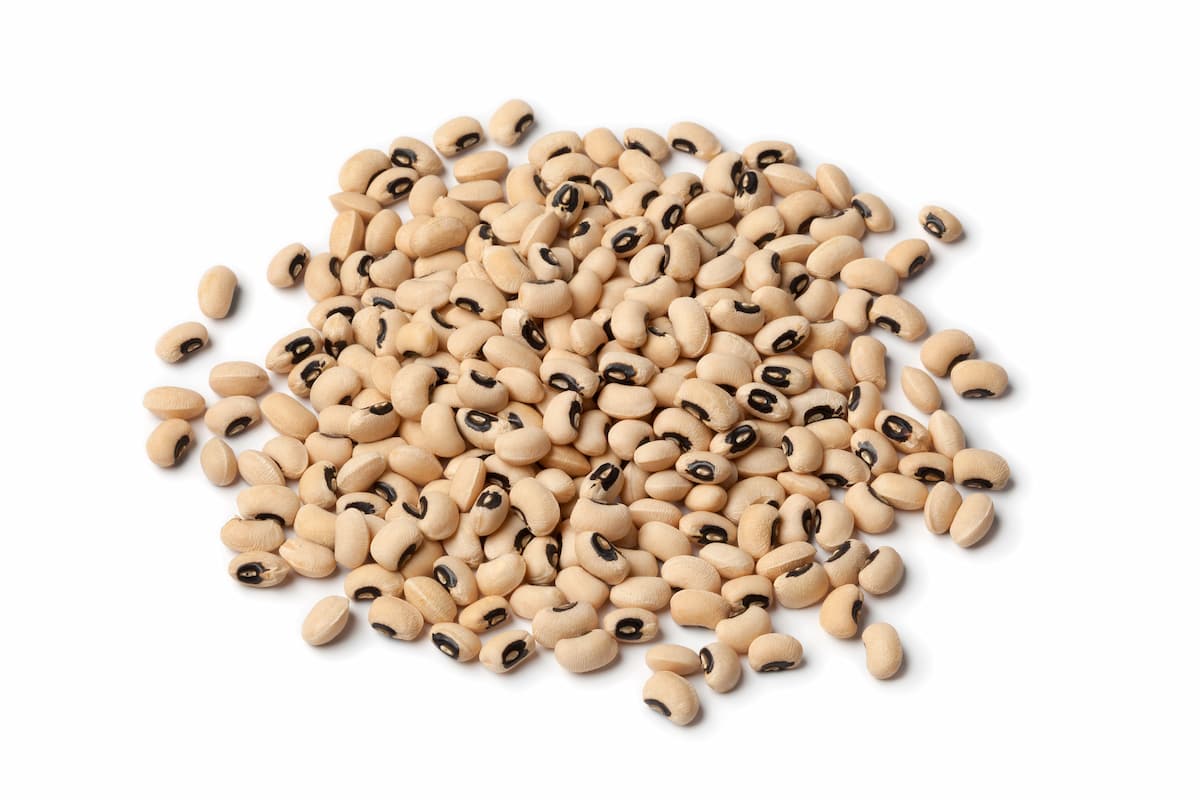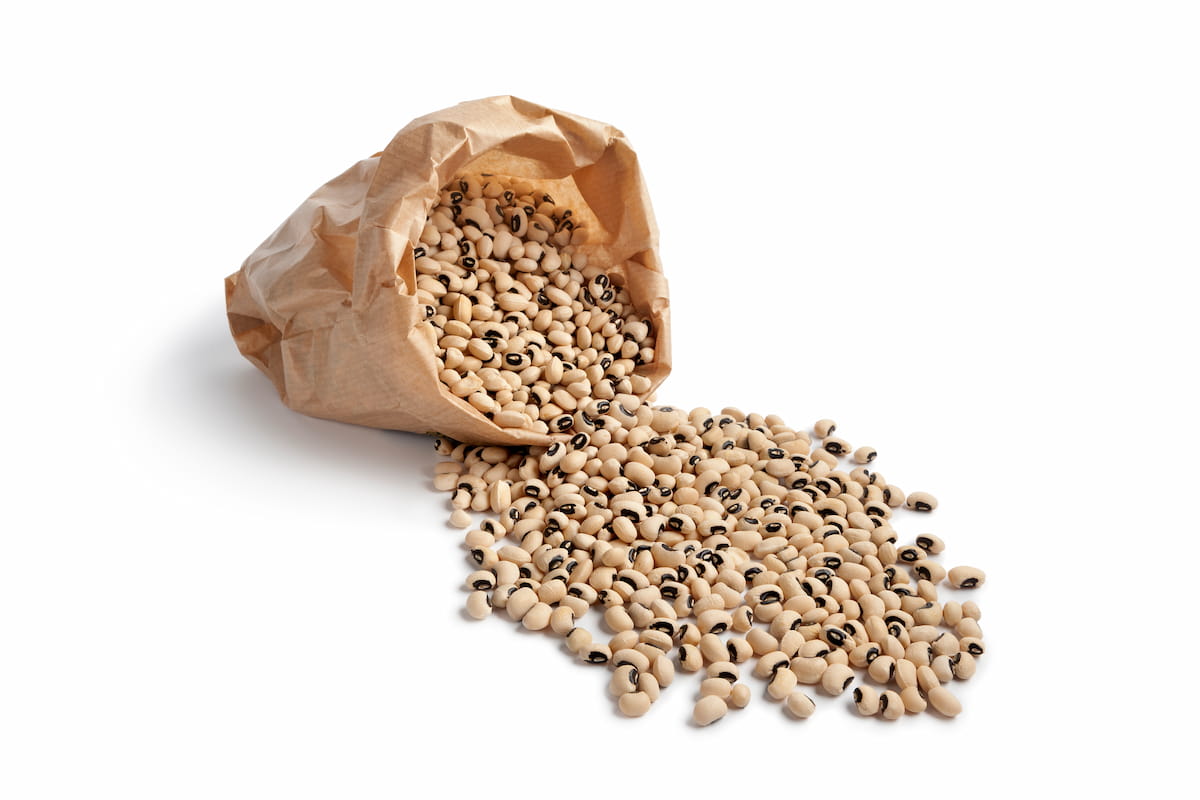Cowpea is a hardy leguminous crop known for its drought-resistant nature and soil-conserving abilities due to its wide and droopy leaves. It has multiple uses, including food, feed, forage, fodder, green manure, and vegetable. Cowpea is mainly cultivated in arid and semi-arid areas of India, including Punjab, Haryana, Delhi, West UP, Rajasthan, Karnataka, Kerala, Tamil Nadu, Maharashtra, and Gujarat. Its ability to withstand drought and short growing periods makes it an attractive crop for farmers in marginal areas, and its use in crop rotation helps restore soil fertility.

CowPea/Black-Eyed-Peas Production
Best Package and Practices of High Production Cowpea
The best package and practices for high Cowpea production include using high-quality seeds, proper land preparation, timely sowing, and adequate moisture management. Other important factors include weed and pest control, proper nutrient management, and timely harvesting.
Land/ Field Preparation and Soil Requirements for Cowpea
Cowpea thrives in well-drained loam or slightly heavy soil, while in colder climates, somewhat sandy soil is preferred as the crop matures earlier in them. It can grow successfully in acidic soil but not in saline or alkaline soil. One deep plowing followed by two or three harrowing and planking is sufficient for hard soil. In normal soil, only two harrowing and planking are enough. However, well-drained fertile soils with an optimum pH of 5.5-6.5 promote better production.
Temperature, Climatic, and Rainfall Requirements for Cowpea
Cowpea is a warm weather crop that thrives in semi-arid regions, with an ideal temperature range of 20-30C. It requires a minimum temperature of 20C for seed establishment, and temperatures above 32C can inhibit root development. To achieve maximum production, day temperatures of 27C and night temperatures of 22C are optimal. Cowpea is sensitive to cold; temperatures below 15C can adversely affect yield. Cowpeas are relatively drought-tolerant, with yields possible with an annual rainfall of 300-700mm, but excessive rainfall or long dry spells can reduce yields.
Propagation Method and Seed Quality for Cowpea
Cowpea is sown directly from seed and can be grown as Monocrop or intercropped with other crops like maize, depending on the intended purpose for production.
Seed Treatment for Cowpea
Seed treatment with Thirum (2gm.) + Carbendazim (1gm.) and Rhizobium culture @ 10g/kg seed is recommended.
Seed Rate and Spacing for Cowpea
For Cowpea cultivation, the recommended seed rate is 20-25 kg/ha for grain production and 30-35 kg/ha for fodder and green manure. Spacing should be 30-45 cm row to row and 10-15 cm plant to plant for both the bushing and spreading varieties. In summer, the seed rate is 30 kg/ha for grain and 4 kg/ha for fodder and green manure.
In case you missed it: Chickpeas (Chana Dal) Production Guide: A Step-By-Step Cultivation Practices

Sowing Method for Cowpea
Cowpeas can be sown through broadcasting, line sowing, and dibbling depending on the purpose and season. Line sowing is preferred over broadcasting, but the latter is better for fodder and green manure crops. Drainage channels can be formed in high rainfall areas at 2-meter intervals to prevent waterlogging. The seeds should be sown at a depth of 3-5 cm.
Crop Rotation and Intercropping in Cowpea
Cowpeas can be effectively rotated with pasture, fodder, or seed crops. For instance, para grass can be followed by maize, Cowpea, rice bean, or tetrakalai for seed. Similarly, silage, hay, or cleaning crops can be followed by seed crops such as maize, groundnut, onion, Cowpea, or jowar. Additionally, planting Cowpea alongside pollinator-dependent vegetable crops like okra, squash, and watermelon can boost yields when grown under suitable conditions.
Manure & Fertilizer Applications in Cowpea
To ensure proper growth of Cowpea, apply 5-10 t/ha of FYM/compost as basal with the last plowing. A 15-20 kg N/ha starter dose is recommended for poor soils. Phosphorus and potassic fertilizer should be applied based on soil test values. Zinc requirements should be determined based on soil type and availability, and doses should be applied accordingly. For clay loam soils, apply 0.25 kg Ammonium Molybdate/ha as basal.
Weed Management and Herbicide Application in Cowpea
Cowpea requires weed-free conditions for the first 25-30 days after sowing for higher yields. The crop quickly covers the land and suppresses weeds. Pendimethalin can be applied at 0.75-1 kg.a.i./ha and one-hand weeding at 35 days after sowing to control weeds effectively.
Water Management in Cowpea
In Cowpea cultivation during summer, irrigation is essential, and the crop requires 5-6 irrigations with an interval of 10-15 days, depending on the soil and weather conditions. The crop responds well to irrigation during the flowering, pod-filling, and vegetative stages. Weeding and fertilizer are also important inputs. The crop can withstand flooding for up to 2 days during flowering and pod setting stages, but prolonged flooding can significantly reduce yield.
Disease Control in Cowpea
Bacterial blight causes brown-red germinating seedlings, brown spots on leaves with chlorotic halos, stem breakage, and shriveled seeds. Control measures include growing resistant varieties, using healthy seeds, and spraying with 0.2% copper oxychloride. Cowpea mosaic causes pale yellow leaves with mosaic and vein banding, puckering, and twisted pods. Control measures include using healthy seeds and spraying with pesticides. Powdery mildew causes white growth on aerial parts and twisted leaves. Control measures include burning leftover plants and spraying with wettable sulfur or Carbendazim.
Pest Control in Cowpea
Various pests, such as Cowpea pod borer, hairy caterpillars, aphids, and jassids, can affect Cowpea crops. Cowpea pod borer damages the seeds by boring into the pods, while hairy caterpillar eats away the green matter of the leaves. Aphids and jassids suck the sap from the leaves, causing them to crumble brown. Control measures include collecting and destroying eggs and larvae and spraying with appropriate insecticides such as quinalphos at 2 ml/liter of water or Oxydemeton Methyl 25 EC (Metasystox) at 1 ml/liter of water.
In case you missed it: Rajma/Kidney Beans Production Guide: A Step-By-Step Cultivation Practices

Harvesting and Threshing of Cowpea
Green pods can be harvested as vegetables 45-90 days after sowing, and matured pods for grains can be harvested in about 90-125 days. After threshing, grains should be dried in the sun before storage.
Cowpea Yield per Acre
Cowpea crop yields around 12-15 quintals of grains and 50-60 quintals of straw per hectare. It produces 250-350 quintals of green fodder per hectare for fodder purposes.
Conclusion
Cowpea is a versatile and resilient crop that can be grown for grain and fodder purposes. With proper cultivation practices such as selecting suitable varieties, preparing the soil, timely irrigation, and pest control, farmers can obtain a good yield of high-quality produce.
- Feed Your Flock for Less: Top 10 Tips to Save on Chicken Feed
- Ultimate Guide to Ossabaw Island Hog: Breeding, Raising, Diet, and Care
- Hatching Answers: The Top 10 Reasons Your Chickens Aren’t Laying Eggs
- Eggs and Economics: Breaking Down the Cost of Raising Backyard Chickens
- Defend Your Greens: Proven Methods to Keep Iguanas Out of Your Garden
- Ultimate Guide to Cinnamon Queen Chicken: A Comprehensive Guide for Beginners
- Ultimate Guide to California Tan Chicken: Breeding, Raising, Diet, Egg-Production and Care
- Ultimate Guide to Marsh Daisy Chicken: Breeding, Raising, Diet, and Care
- 10 Types of Chicken Farming Businesses You Can Start for Profits